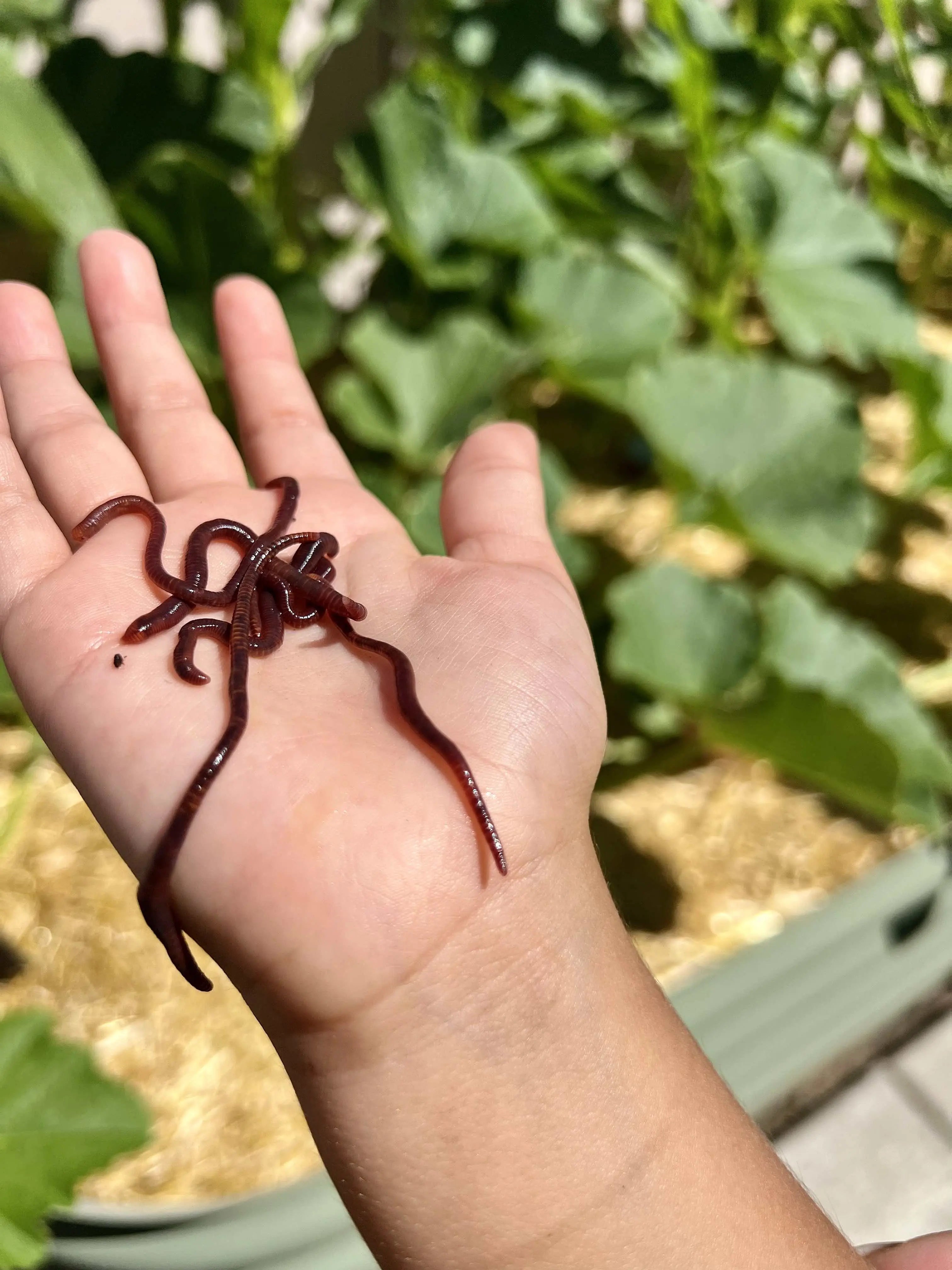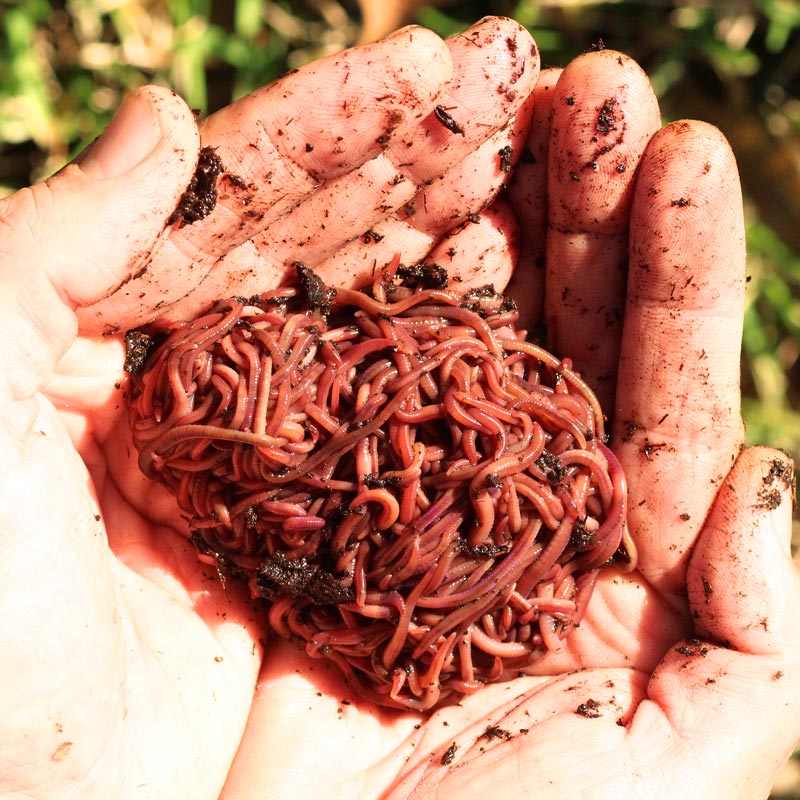Making The Most Of the Conveniences of Red Wiggler Worms: A Comprehensive Guidebook for Home Gardeners and Urban Farmers
In the realm of lasting horticulture techniques, red wiggler worms stand as unsung heroes, quietly transforming organic waste right into nutrient-rich spreadings that can function wonders for dirt wellness. By checking out the ins and outs of just how to effectively care for and take full advantage of the advantages of red wiggler worms, people can open a riches of chances for enhancing the sustainability and productivity of their gardening undertakings.
Comprehending Red Wiggler Worms
Red Wiggler worms, renowned for their efficient composting capabilities, are a types of earthworms extensively utilized in vermiculture methods. These worms, clinically recognized as Eisenia fetida, thrive in rotting natural product, making them perfect prospects for composting (Red Wiggler Worms). Red Wigglers are voracious eaters, capable of eating their own weight in organic waste daily. Their digestive process breaks down organic matter into nutrient-rich spreadings, which are a valuable source for enhancing soil and promoting plant development.
One secret quality of Red Wiggler worms is their reproductive rate. These hermaphroditic creatures possess both male and female reproductive organs, allowing them to reproduce swiftly under favorable problems. A fully grown Red Wiggler can generate several children in a short period, guaranteeing a stable population within a composting system.

Establishing a Worm Container
When establishing a worm container for vermiculture objectives, proper prep work and focus to detail are vital for developing a conducive atmosphere for Red Wiggler worms. Begin by picking a suitable container for your worm container. This can be a plastic or wood container with a lid to maintain moisture levels and shield the worms from light. Make certain that the bin has drain holes at the base to protect against waterlogging.

Area the worm bin in a cool, dark place away from direct sunshine and severe temperatures. By adhering to these steps, you can establish up a flourishing worm container that will efficiently process natural waste into nutrient-rich vermicompost for your yard.
Feeding and Maintaining Worms
Making certain a balanced and nourishing diet regimen is vital for the wellness and efficiency of Red Wiggler worms in a vermiculture system. It is crucial to avoid feeding them citrus fruits, onions, garlic, dairy items, meat, and oily foods as these can be hazardous to the worms or create undesirable odors in the container.
Appropriate dampness levels are additionally vital for the health of Red Wiggler directory worms. The bed linen must feel like a moist sponge, giving enough moisture for the worms to breathe with their skin. Routinely check the moisture degrees and readjust by including water or completely dry bed linen material as needed. Additionally, maintaining proper temperature level conditions in between 55-77 ° F(13-25 ° C )will certainly make certain optimum worm task and reproduction. By carefully monitoring their diet regimen, moisture, and environmental problems, home garden enthusiasts and anchor metropolitan farmers can maintain a productive and healthy Red Wiggler worm population for composting purposes.
Collecting Worm Castings
To successfully extract nutrient-rich worm spreadings from the vermicompost, a methodical harvesting procedure is essential for making best use of the composting benefits. The very first action in gathering worm spreadings is to encourage the worms to move to one side of the bin.
After the castings have actually been gathered, it is very important to separate any continuing to be worms from the castings to prevent hurting them during storage or application. One efficient approach is to create cone-shaped stacks of castings under brilliant light. Worms will intuitively move away from the light, permitting for simple splitting up and elimination.
Lastly, the gathered worm spreadings need to be stored in an amazing, dark, and completely dry area to maintain their quality and efficiency as a nutrient-rich dirt change. By adhering to these actions, home garden enthusiasts and city farmers can make best use of the advantages of red wiggler worms in their vermicomposting systems.
Utilizing Worm Castings in Gardening
The consolidation of nutrient-rich worm castings into yard dirt can substantially boost plant development and total dirt health. Worm castings, likewise called vermicast, are an all-natural plant food generated by red wiggler worms as they damage down natural issue. These spreadings are abundant in crucial nutrients like nitrogen, phosphorus, potassium, and valuable germs that advertise plant development and boost read more soil framework.
When using worm castings in gardening, it is important to mix them extensively right into the dirt or use them as a leading clothing around plants. The slow-release nature of worm spreadings guarantees a stable supply of nutrients to plants in time, decreasing the risk of nutrient leaching and advertising long-term dirt fertility. Additionally, worm castings help improve soil aeration, water retention, and microbial activity, creating a healthy setting for plant roots to prosper.

Final Thought
To conclude, the usage of red wiggler worms in home horticulture and city farming can significantly benefit soil wellness and plant development. By understanding exactly how to establish and keep a worm container, feed the worms properly, and harvest their nutrient-rich castings, garden enthusiasts can make the most of the benefits of these earthworms. Integrating worm spreadings right into horticulture techniques can enhance soil fertility and overall plant productivity. In general, red wiggler worms use a lasting and reliable solution for improving garden and farm yields.
In the world of lasting horticulture methods, red wiggler worms stand as unrecognized heroes, silently changing organic waste into nutrient-rich castings that can work marvels for dirt wellness.When developing a worm container for vermiculture functions, proper preparation and attention to detail are necessary for developing a conducive environment for Red Wiggler worms. The first action in collecting worm spreadings is to motivate the worms to migrate to one side of the bin. Worm castings, also known as vermicast, are an all-natural fertilizer produced by red wiggler worms as they damage down natural matter. By comprehending exactly how to set up and maintain a worm container, feed the worms appropriately, and gather their nutrient-rich castings, garden enthusiasts can make best use of the advantages of these earthworms.